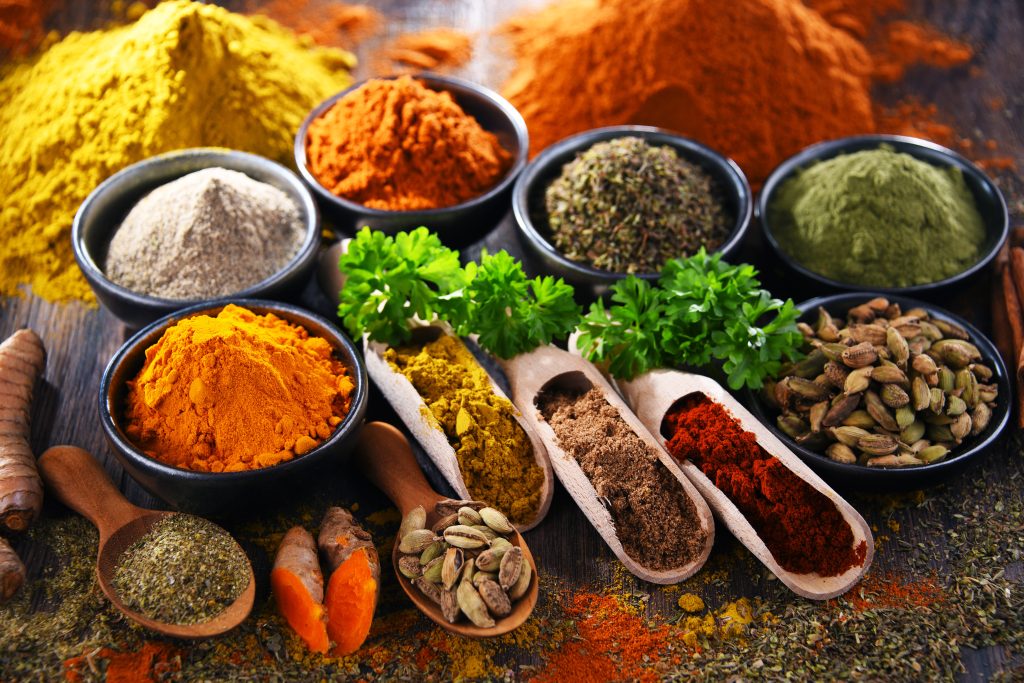
The allure of Mediterranean cuisine lies not only in its vibrant flavors and aromas but also in its rich tapestry of spices that have been woven into the fabric of its culinary traditions for centuries.
Among the Mediterranean regions, the Levantine countries—particularly Syria, Turkey, and Iraq—offer a captivating journey through their spice markets, where the air is filled with the intoxicating scents of sumac, Aleppo pepper, sweet red pepper, and more. These spices are more than just ingredients; they are storytellers, carrying with them tales of trade routes, cultural exchanges, and culinary evolution. At Ottawa Kabab, we embrace these spices to create dishes that transport you straight to the heart of the Mediterranean.
Exploring the Rich World of Syrian Spices
Sumac: The Tangy Red Jewel
Sumac, a deep red spice derived from the dried berries of the sumac bush, is a cornerstone of Middle Eastern cuisine. Its tangy, lemony flavor adds a unique brightness to dishes, making it an essential ingredient in many traditional recipes. In Syrian cooking, sumac is often used to add a zesty kick to salads, meats, and even desserts.
Did You Know?
- Sumac has antioxidant properties that have been valued for their health benefits.
- Historically, sumac was used by ancient civilizations for medicinal purposes, thanks to its anti-inflammatory properties.
Aleppo Pepper: The Mild and Fruity Heat
Named after the northern Syrian city of Aleppo, this spice is known for its moderate heat and fruity undertones. Aleppo pepper adds a subtle complexity to dishes without overpowering them, making it a favorite among chefs and home cooks alike. Its vibrant red color also makes it visually appealing as a garnish.
Did You Know?
- Aleppo pepper is often compared to the ancho chili in terms of heat level but is distinct in its slightly salty, raisin-like flavor.
- The city of Aleppo, once a major hub on the Silk Road, played a pivotal role in the spice trade.
Sweet Red Pepper Crushed: The Essence of Sweetness and Spice
Sweet red pepper, often used in its crushed form, provides a sweet yet slightly spicy flavor profile. This spice is integral to many Mediterranean dishes, enhancing the taste of both savory and sweet preparations. Its versatility makes it a staple in spice blends and rubs.
Key Points About Sweet Red Pepper
- It is rich in vitamins A and C, contributing to its popularity as a health-boosting ingredient.
- Sweet red pepper is often used to balance the heat in spicy dishes, offering a natural sweetness.
Other Notable Spices from the Region
- Cumin: A staple in Middle Eastern cooking, cumin’s warm, earthy flavor is indispensable in spice mixes like za’atar and baharat.
- Cardamom: Known for its aromatic and slightly sweet flavor, cardamom is used in both savory dishes and desserts.
- Cinnamon: Often associated with sweets, cinnamon also plays a role in savory Mediterranean dishes, adding depth and warmth.
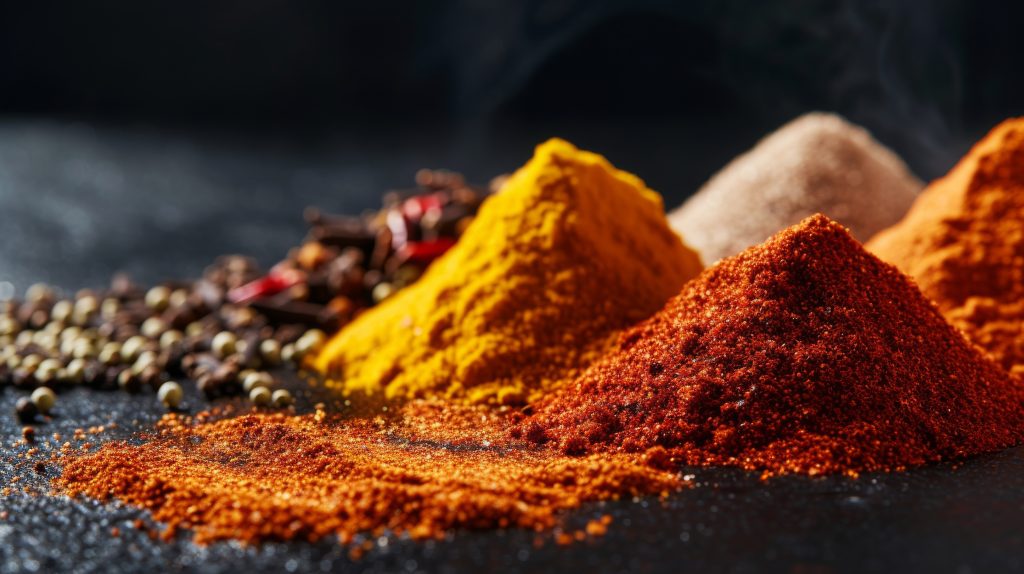
Biwaz: A Traditional Side Plate
One of the most delightful ways to experience the symphony of Mediterranean spices is through Biwaz, a traditional side plate that perfectly balances freshness and spice. Biwaz is a simple yet flavorful dish made from sliced fresh onions, chopped parsley, pomegranate molasses, and a generous amount of sumac. This vibrant salad is a testament to how a few ingredients, when combined thoughtfully, can create a dish bursting with flavor.
Biwaz Ingredients
- Onions: Thinly sliced onions form the base of the salad, offering a mild sharpness.
- Parsley: Freshly chopped parsley adds a pop of color and a refreshing herbal note.
- Pomegranate Molasses: This sweet and tangy syrup is a staple in Middle Eastern cuisine, adding depth and complexity.
- Sumac: The star of the dish, sumac, brings a tangy brightness that ties all the ingredients together.
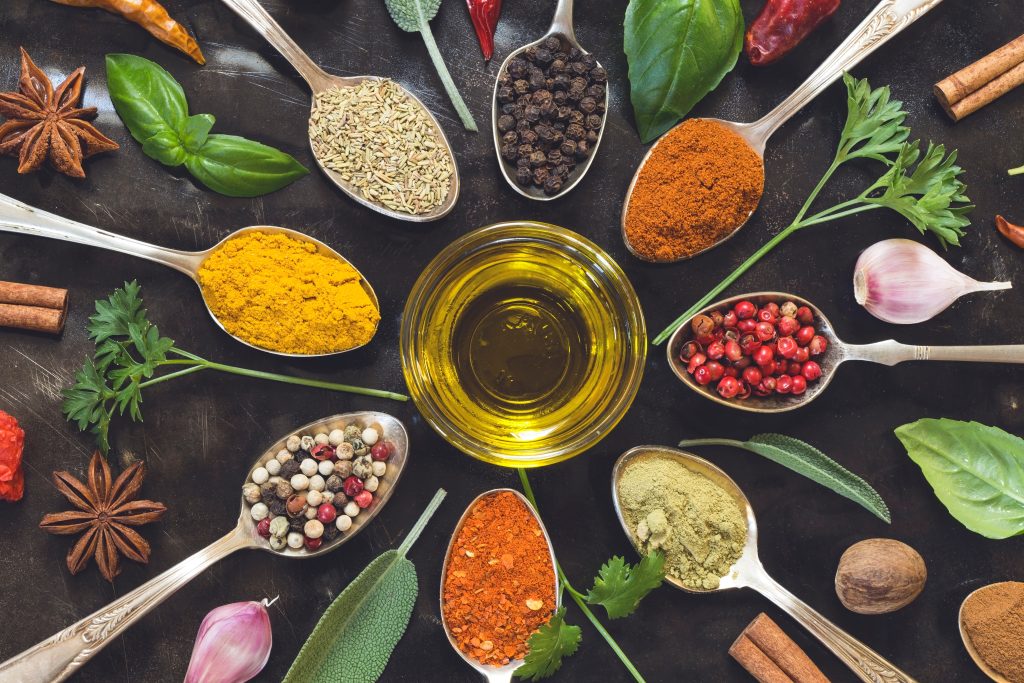
How Ottawa Kabab Utilizes These Spices
At Ottawa Kabab, we pride ourselves on using authentic Mediterranean spices to create dishes that are not only delicious but also true to their roots.
Our menu features a range of dishes that highlight the unique flavors of these spices:
Kabab
Our signature kababs are mixed with a blend of sumac, Aleppo pepper, and other spices, infusing the meat with a rich and aromatic flavor. The sumac adds a hint of tanginess, while the Aleppo pepper provides a gentle heat that lingers on the palate.
Adana Kabab
A popular Turkish dish named after the city of Adana, is known for its rich and spicy flavor. The spices and ingredients commonly added to Adana Kabab include:
- Red Pepper Flakes: Often a key ingredient, providing the characteristic heat and color.
- Sumac: Adds a tangy, lemony flavor.
- Cumin: Contributes an earthy and warm taste.
- Paprika: Used for its sweet and smoky flavor.
- Black Pepper: Adds a mild spiciness and depth of flavor.
- Garlic: Provides a robust and savory taste.
- Onion: Grated or finely chopped, adds moisture and flavor.
- Parsley: Offers a fresh, herbal note.
- Salt: Enhances the overall flavor of the meat.
Chicken Shish
Our chicken shish is marinated in a mixture of sweet red pepper crushed and other spices, creating a savory-sweet flavor profile that is both complex and satisfying. The sweet red pepper complements the juiciness of the chicken, while the spices enhance its natural flavors.
Lamb Tikka
For our lamb tikka, we use a blend of cumin, cardamom, and cinnamon, creating a harmonious balance of spices that highlight the tenderness of the lamb. The warm spices add depth to the dish, making it a favorite among our patrons.
Side Dishes
Our side dishes, such as hummus and baba ghanoush, are elevated with a sprinkle of sumac or Aleppo pepper, adding an extra layer of flavor that complements their creamy textures. These spices not only enhance the taste but also add a visual appeal to the dishes.
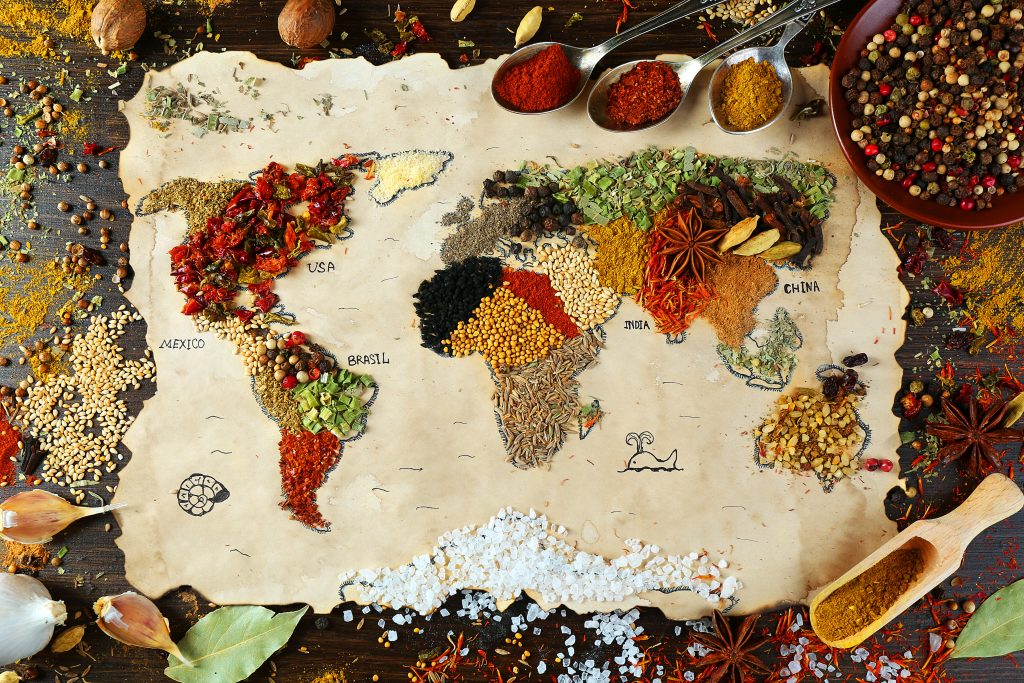
The Spice Trade: A Historical Perspective
The Mediterranean region has been a melting pot of cultures and flavors for centuries, thanks in part to the spice trade. Spices were once considered luxury items, traded across continents and used as currency in some cultures. The Levantine countries, with their strategic location along ancient trade routes, played a crucial role in the distribution and cultivation of these precious commodities.
Facts About the Mediterranean Spice Trade
- The spice trade dates back over 4,000 years, with spices like cinnamon and black pepper being highly prized in ancient Egypt.
- The Silk Road, which connected Asia to the Mediterranean, facilitated the exchange of spices, along with other goods and ideas.
- The demand for spices in Europe during the Middle Ages led to the Age of Exploration, as explorers sought new routes to the spice-rich lands of the East.
Key Producers of Mediterranean Spices
- Turkey: Known for its production of Aleppo pepper and sweet red pepper, Turkey is a leading exporter of Mediterranean spices.
- Syria: Despite its recent challenges, Syria remains a significant producer of spices like sumac and cumin, thanks to its fertile lands and favorable climate.
- Iraq: With its rich agricultural heritage, Iraq contributes to the production of spices such as cardamom and cinnamon.
Statistics: Leading Spice-Producing Countries
| Spice | Leading Producers |
|---|---|
| Sumac | Turkey, Syria, Iran |
| Aleppo Pepper | Turkey, Syria |
| Sweet Red Pepper | Turkey, Spain, China |
| Cumin | India, Syria, Iran |
| Cardamom | Guatemala, India, Iraq |
| Cinnamon | Indonesia, Sri Lanka, Vietnam |
Did You Know?
- Sumac’s Versatility: Beyond its culinary uses, sumac is often used as a dye in traditional textiles, thanks to its deep red color.
- Aleppo Pepper’s Resilience: Despite the challenges faced by the city of Aleppo, the cultivation of Aleppo pepper continues in neighboring regions, preserving its unique flavor for future generations.
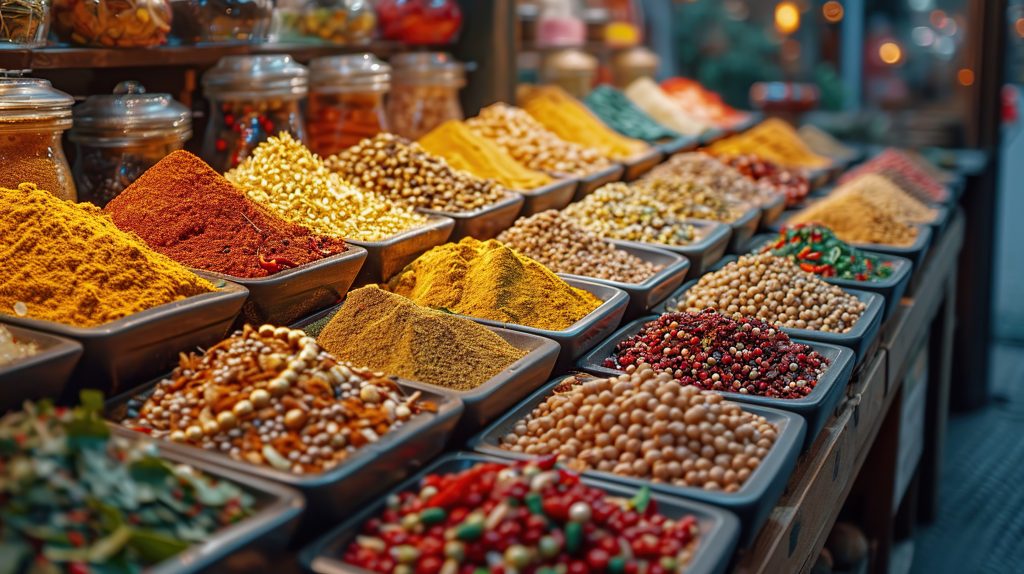
Spices in Syrian Culture and Cuisine
In Syrian culture, spices are more than just ingredients; they are an integral part of the culinary identity. Spices are used to create dishes that are not only flavorful but also reflective of the country’s rich heritage and diverse influences. From street food vendors to home kitchens, spices are celebrated for their ability to transform simple ingredients into extraordinary meals.
The Art of Spice Blending
In Syrian cuisine, spice blending is considered an art form, passed down through generations. Each family may have its own unique blend of spices, known as “baharat,” which is used to season a variety of dishes. These blends often include cumin, cardamom, and cinnamon, among others, creating a harmonious balance of flavors that define Syrian cooking.
Popular Syrian Mezze Dishes Featuring Spices
- Kibbeh: A dish made from bulgur, minced onions, and finely ground lean beef, lamb, or goat, seasoned with cumin and cinnamon.
- Fattoush: A refreshing salad that includes sumac as a key ingredient, adding a tangy kick to the fresh vegetables.
- Muhammara: A spicy red pepper and walnut dip, flavored with Aleppo pepper and sweet red pepper crushed.
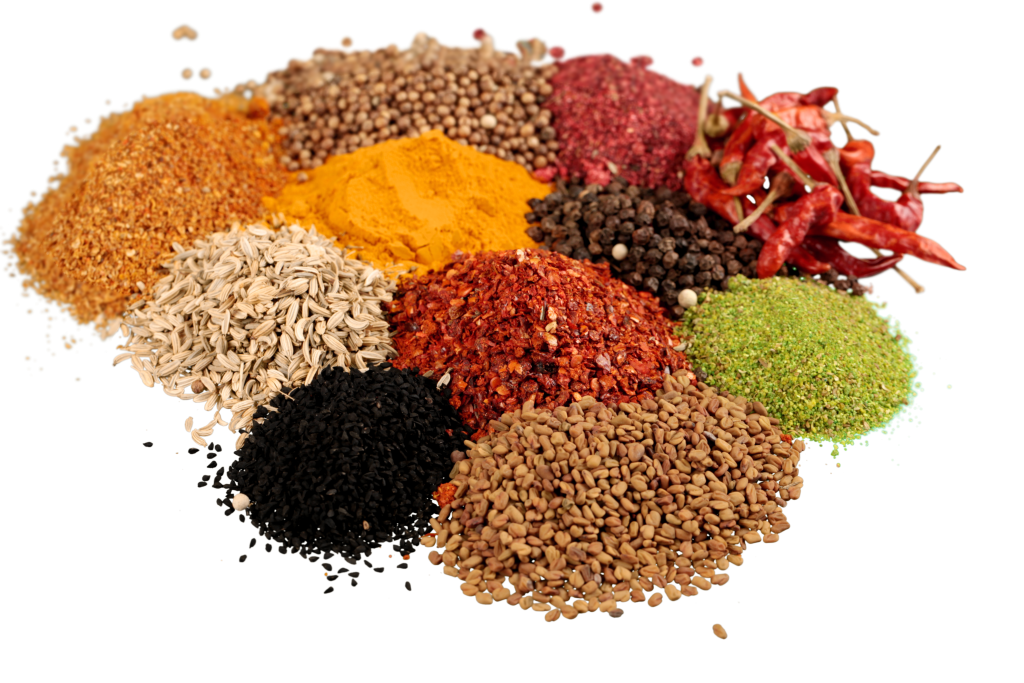
The Global Influence of Mediterranean Spices
Mediterranean spices have transcended borders, influencing cuisines around the world. Their unique flavors have been embraced by chefs and home cooks alike, who incorporate them into a variety of dishes, from fusion cuisine to classic recipes.
The Rise of Mediterranean Cuisine
In recent years, Mediterranean cuisine has gained popularity for its health benefits and flavorful dishes. The use of spices like sumac and Aleppo pepper not only enhances the taste but also offers nutritional benefits, making them appealing to health-conscious consumers.
Health Benefits of Mediterranean Spices
- Sumac: Rich in antioxidants, sumac helps combat oxidative stress and supports overall health.
- Aleppo Pepper: Contains capsaicin, which has been linked to various health benefits, including pain relief and improved metabolism.
- Cumin: Known for its digestive benefits, cumin is often used in traditional medicine to aid digestion and reduce inflammation.
The Role of Spices in Modern Cooking
Today, spices from the Mediterranean are used in a wide range of culinary applications, from marinades and rubs
to sauces and dressings. Their versatility and flavor-enhancing properties make them a valuable addition to any kitchen.
Fun Facts About Mediterranean Spices
- Sumac in Drinks: In some Middle Eastern countries, sumac is used to flavor drinks, adding a tangy twist to traditional beverages.
- Aleppo Pepper’s Popularity: Aleppo pepper has become a trendy ingredient in the culinary world, often used in gourmet recipes for its unique flavor profile.
Conclusion
The journey through Mediterranean spices is a journey through history, culture, and flavor. From the tangy brightness of sumac to the mild heat of Aleppo pepper, these spices have shaped the culinary traditions of the Mediterranean region and continue to captivate palates worldwide. At Ottawa Kabab, we invite you to experience the magic of these spices in our dishes, crafted with care and authenticity to transport you to the heart of the Mediterranean. Whether you’re savoring our kababs, chicken shish, or lamb tikka, each bite is a celebration of the rich tapestry of flavors that define Mediterranean cuisine.

By embracing the rich world of Mediterranean spices, we honor the traditions of the past while inviting you to explore the vibrant flavors that make this cuisine so beloved. Join us at Ottawa Kabab for a culinary journey that delights the senses and nourishes the soul.
